(Click on any image to view it in high resolution.)
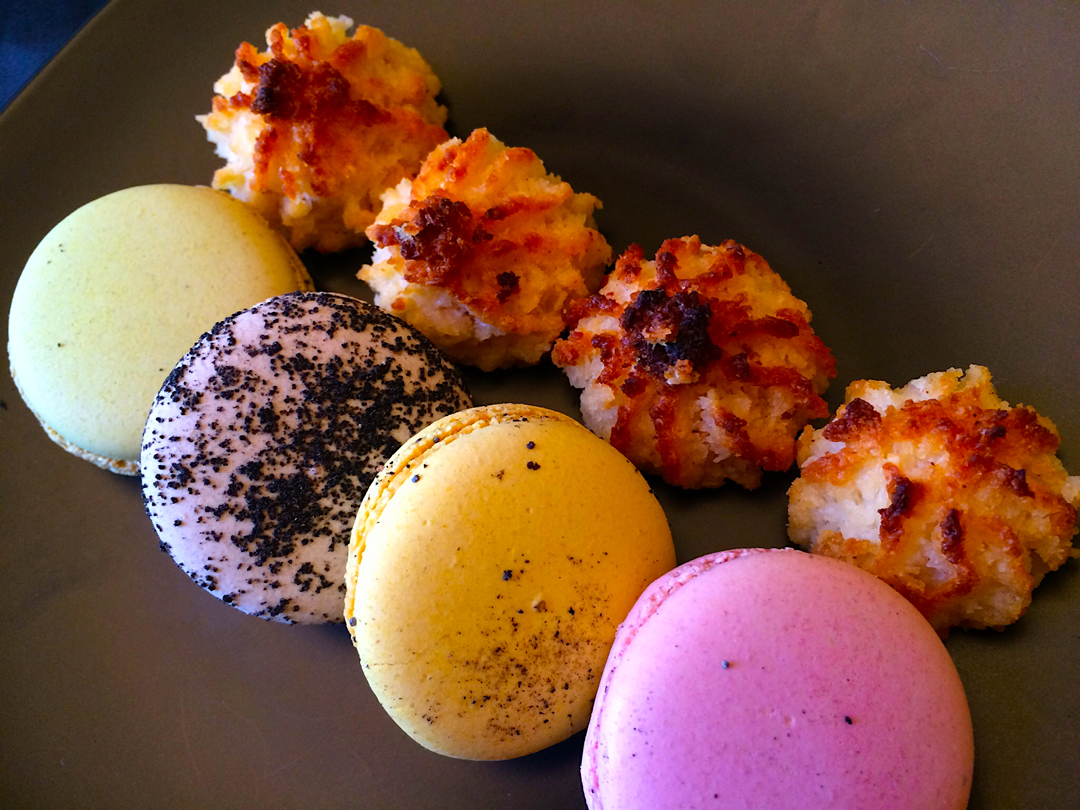
There seems to be some confusion regarding these two very dissimilar cookies with very similar names, but oh, what a difference an O makes. Read on and all will be revealed….

(Click on any image to view it in high resolution.)

There seems to be some confusion regarding these two very dissimilar cookies with very similar names, but oh, what a difference an O makes. Read on and all will be revealed….
…or so it would seem due to the convergence of spring and the heightened popularity of lamb cookery and feasting this time of year.
Springtime and lamb are inextricably intertwingled throughout religious travails, pagan tales, and supermarket sales; it’s all about timing. The Jewish Passover (Pesach) Seder recounts the dictum of marking doors with lamb’s blood to signal the Angel of Death to pass over those houses; in Christianity, Easter commemorates the death and resurrection of Jesus, symbolized by the Paschal Lamb. Wasn’t the Last Supper a Seder? It’s no coincidence that the Hebrew word Pesach (פֶּסַח) and the Greek word Pascha (Πάσχα) share a heritage.
(Click on any image to view it in high resolution.)
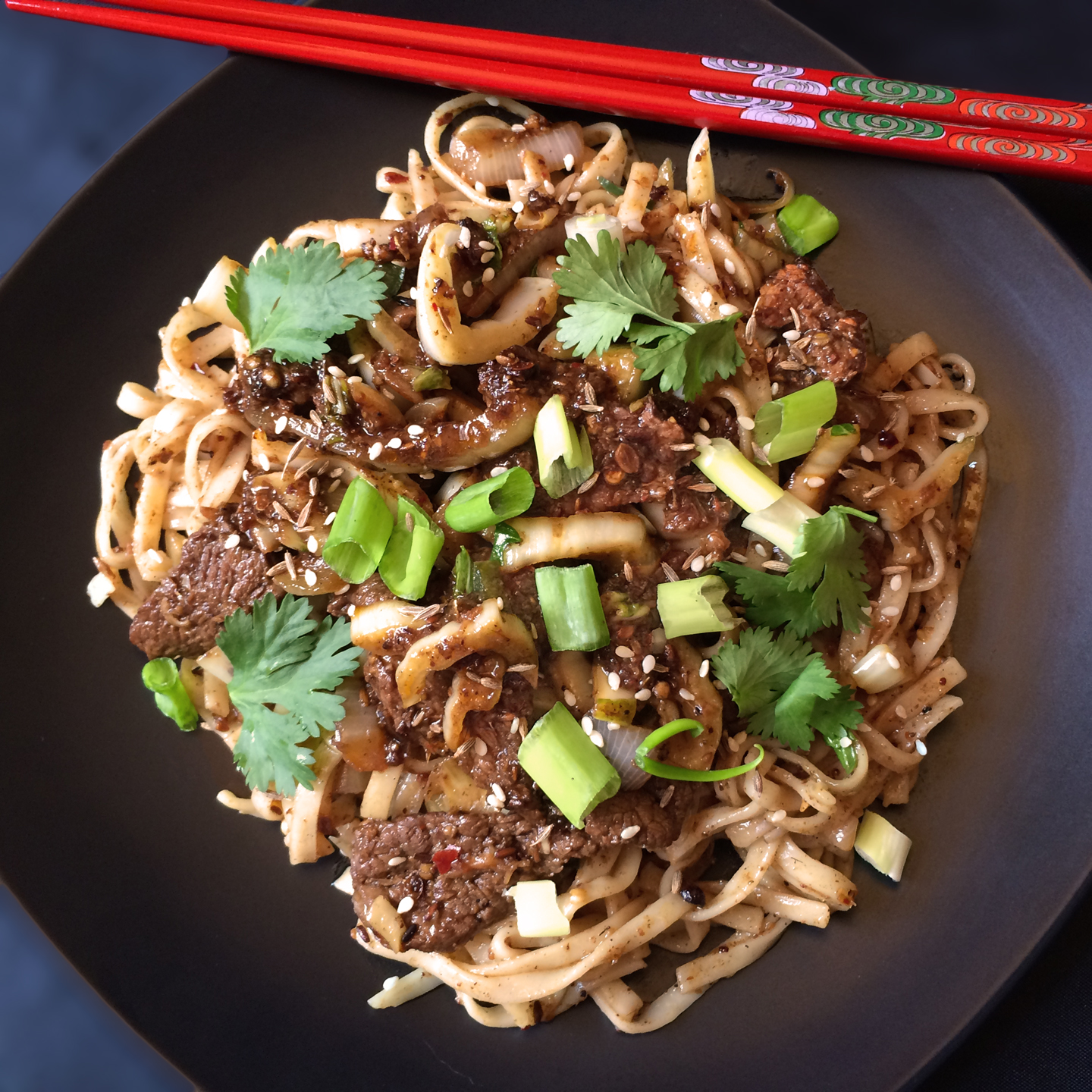
Anyway, the vernal equinox has occurred, Passover is upon us, Easter is just around the corner, and lambs spring eternal (or maybe that’s goats – just kidding) so since this is a thinly veiled Cooking in the Time of COVID post, here’s a dish I made that has nothing to do with religiosity and everything to do with lamb.
I’m often struck by the affinity lamb has for cumin and chilies in certain Chinese and Central Asian dishes so it’s always a treat to make this Xi’an Style Spicy Cumin Lamb dish. It features cumin seeds, coriander seeds, Sichuan peppercorns and dried red peppers; onions, bok choy, fresh long green chili peppers and scallions; plus the usual suspects (fresh ginger, garlic, soy sauce, Shaoxing wine, Zhenjiang vinegar, etc.). Oh, and lamb and noodles.
But no matter how you celebrate the season, Happy Spring!
Stay safe, be well, and eat whatever it takes. ❤️
(Originally published on Holi in 2019.)
The Equal Opportunity Celebrant strikes again, eating my way through Holi today, the Hindu festival of spring and colors celebrated predominantly in India and Nepal. Prowling around the Indian neighborhood in Jackson Heights yesterday in search of traditional Holi treats, I enjoyed watching children choosing packets of powder in every color of the rainbow to sparge at anything in their path, thus producing a glorious festive mess. The holiday recounts the heartwarming legend of Krishna coloring his face for Radha, his love, and heralds the arrival of spring.
(Click on any image to view it in high resolution.)
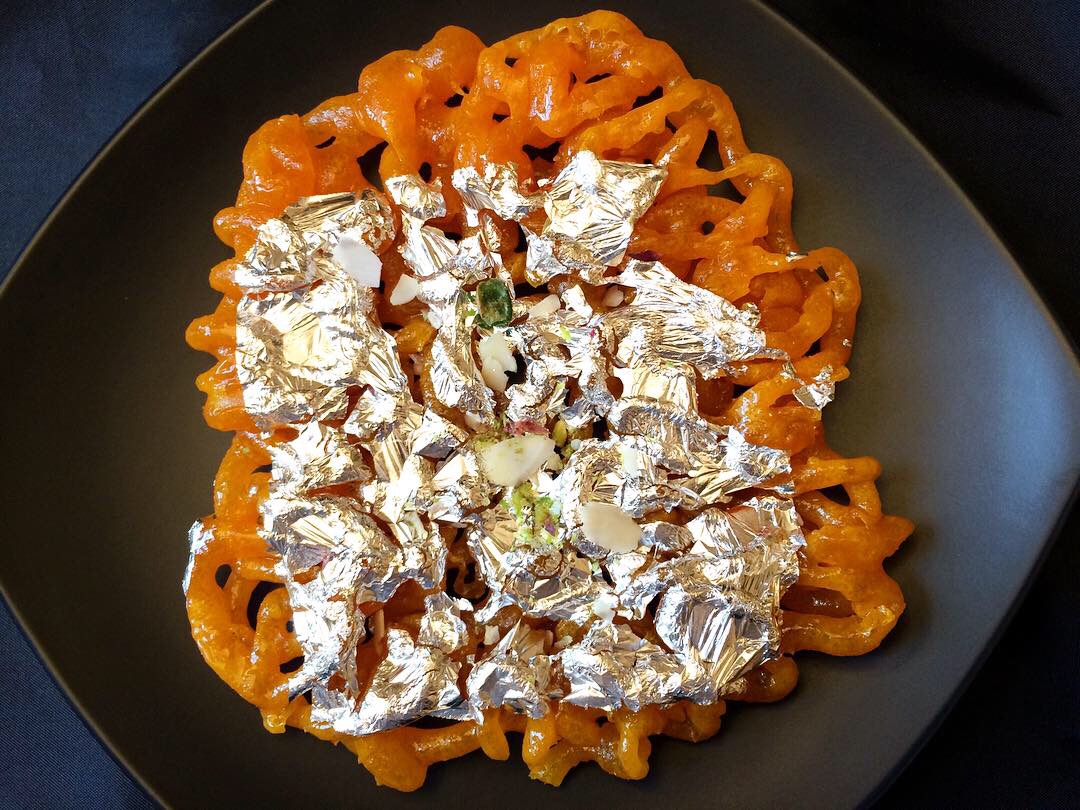
Jalebi are one of the most widely available Indian mithai (you can read about my addiction to them here); they’re made from chickpea or wheat flour batter, usually orange but occasionally yellow (no difference in flavor, just a color preference) which is drizzled into hot oil in coil shapes. The resulting deep fried confections look like pretzels; they’re crispy when they come out of the oil, then they’re soaked in super sweet syrup so you get the best of both worlds. For Holi, however, jalebi get the royal treatment; this one is about 7 inches in diameter and generously adorned with edible silver foil, sliced almonds and pistachios. Because this sticky jumbo jalebi (jalumbi? jalembo?) is larger and thicker than the standard issue version, it provides more crunch and holds more syrup in each bite so it’s even more over the top, if such a thing is possible.
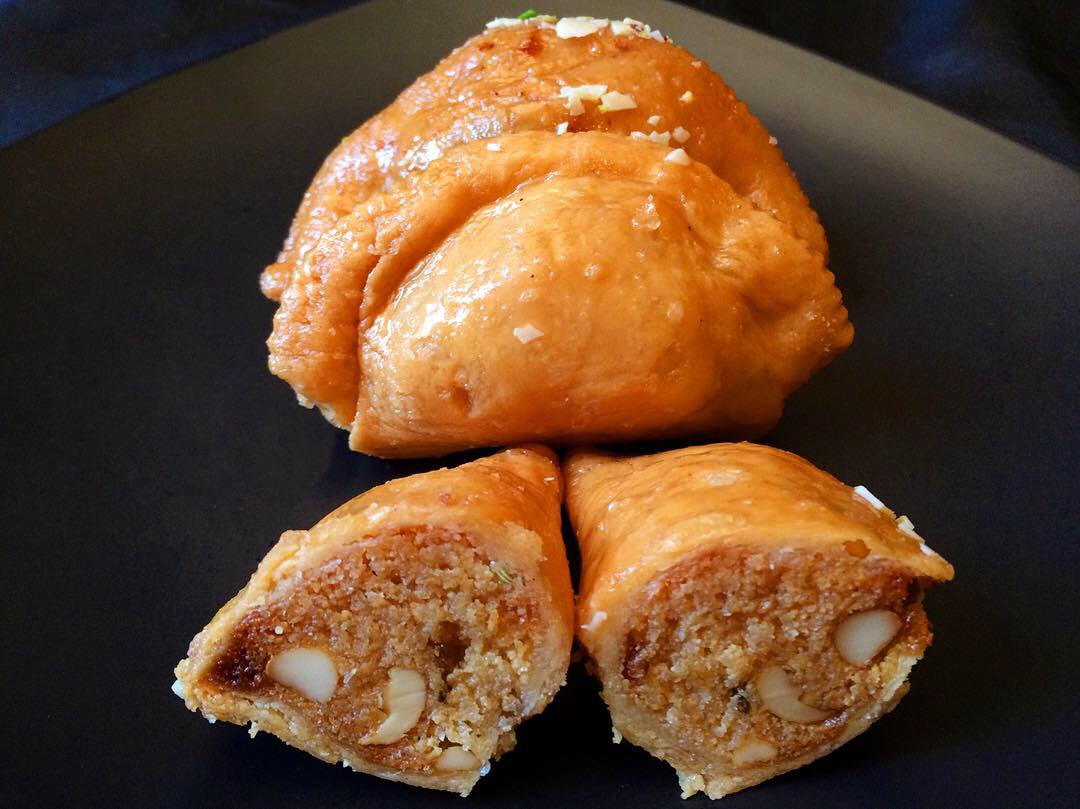
This is gujiya (you might see gujia), a classic Holi sweet, half-moon shaped and similar to a deep-fried samosa. Crunchy outside and soft within, it’s filled with sweetened khoa (milk solids), ground nuts, grated coconut, whole fruits and nuts (raisins and cashews in this one), cumin seeds, and a bit of suji (semolina) for texture.
These Holi day treats came from Maharaja Sweets, 73-10 37th Ave, Jackson Heights, Queens.
Holi Mubarak! Have a blessed Holi!
(Originally posted on April 20, 2019, in better times.)
(Click on any image to view it in high resolution.)
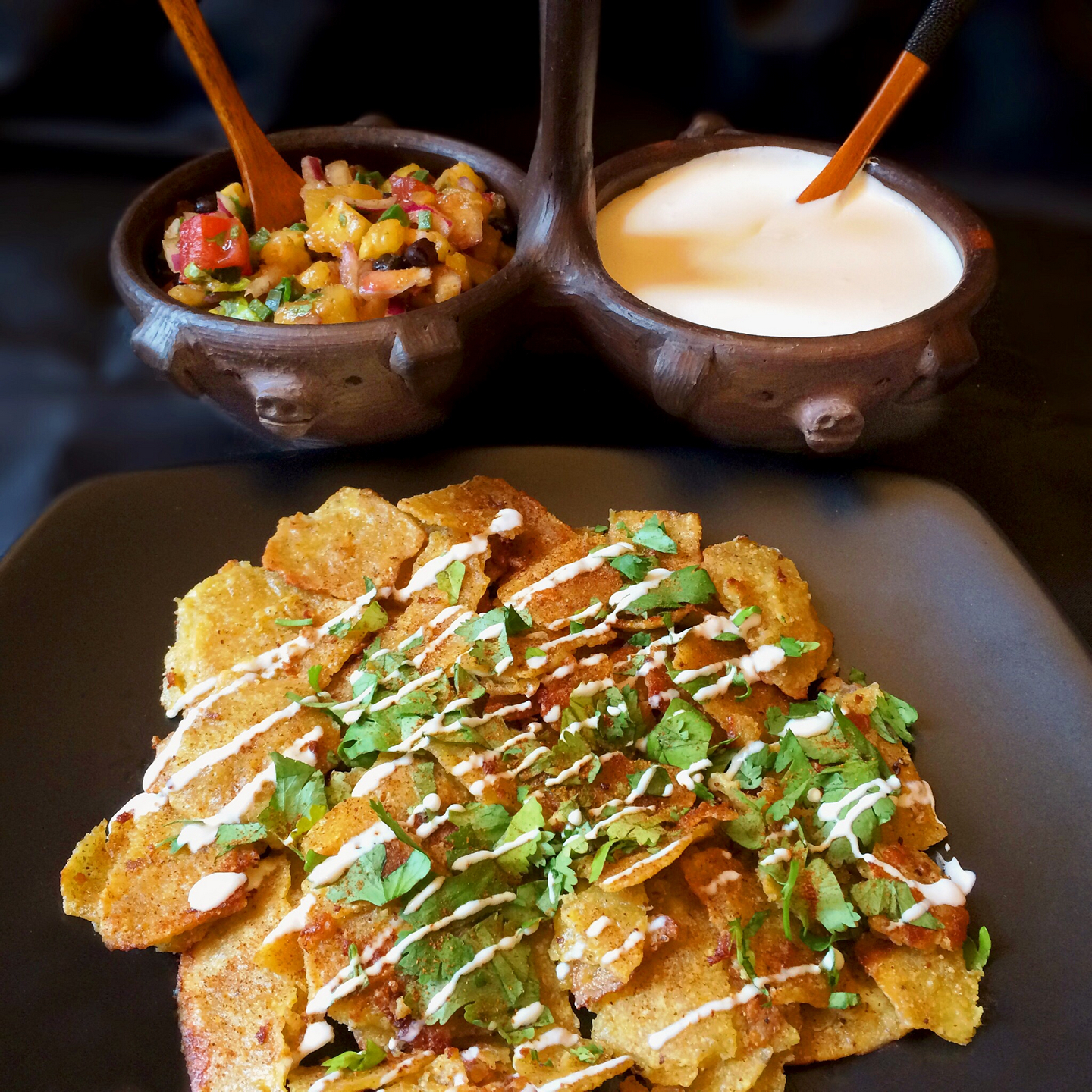
Previously on ethnojunkie.com, I did a springtime post that included a story about someone who dared me to come up with an ethnic fusion Passover menu. I wrote:
Well, far be it from me to dodge a culinary challenge! So although obviously inauthentic, but certainly fun and yummy, here’s to a Sazón Pesach!
Picante Gefilte Pescado
Masa Ball Posole
Brisket Mole
Poblano Potato Kugel
Maple Chipotle Carrot Tzimmes
Guacamole spiked with Horseradish
Charoset with Pepitas and TamarindoAnd, of course, the ever popular Manischewitz Sangria!
It was all in good fun, of course, but it got me thinking about actually creating a Jewish-Mexican fusion recipe. It isn’t strictly Kosher for Passover, but I thought the concept was worth a try. So here is my latest crack at cross cultural cooking: Masa Brei!
Now you might know that Matzo Brei (literally “fried matzo”) is a truly tasty dish consisting of matzos broken into pieces that are soaked briefly in warm milk (some folks use water), drained, soaked in beaten eggs until soft, then fried in copious quantities of butter. Typically served with sour cream and applesauce, it’s heimische cooking, Jewish soul food, at its finest and it’s easy to do.
So I thought it might be worth a try to swap out the matzos for tostadas, the milk for horchata, the sour cream for crema, and the applesauce for homemade pineapple-jalapeño salsa. A sprinkle of tajín, a scatter of chopped cilantro – and it actually worked!
Happy Passover!
!חג פסח שמח
I still haven’t been back to Flushing because of the damndemic but I do manage to make it to Manhattan’s Chinatown for my idea of essential provisions. On a recent shopping spree, I picked up a package of frozen Brown Sugar Boba Ice Cream Bars.
(Click on any image to view it in high resolution.)
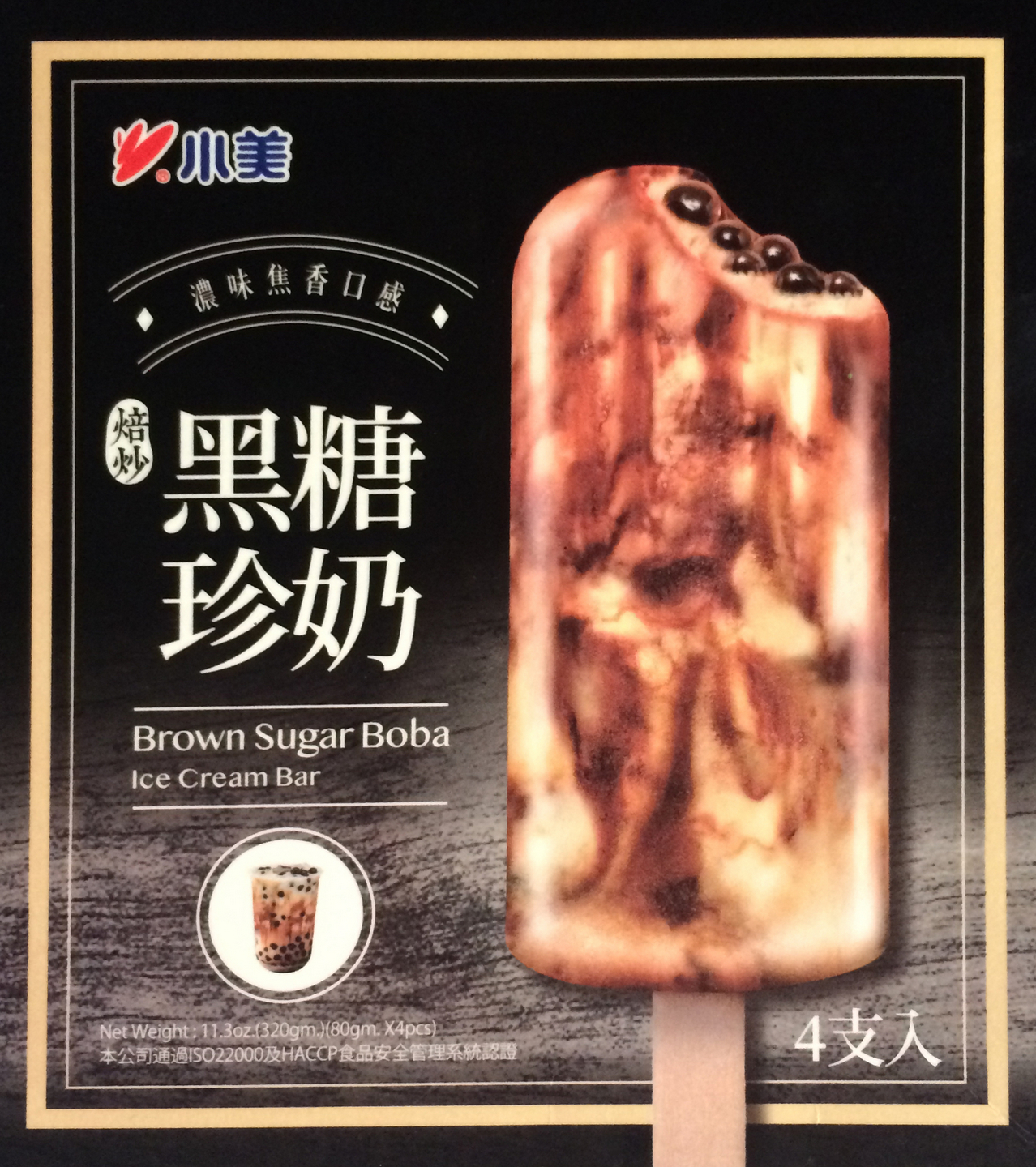
It transported me back to the day in May, 2019 when the Taiwanese chain, Tiger Sugar Bubble Tea, first opened its window at 40-12 Main Street in Flushing. We all stood patiently outside in the seemingly interminable, glacially slow moving line to get our first taste of this refreshing treat – refreshing indeed because IIRC temperatures were pushing 90°; on subsequent visits when it was pouring rain, the management handed out loaner umbrellas to keep us dry and happy as we waited.
The popular milk drink with its Instaworthy tiger stripes of dark brown sugar syrup was an instant success spawning multiple competitors like this excellent version from nearby Yi Fang Fruit Tea.
Its sweet syrup and melt-in-your-mouth boba were warm and flavorful and contrasted harmoniously with the ice cold milk. Before long, an enterprising challenger, With Sugar and Tea, opened up next door to Tiger Sugar featuring a drink with a snazzy cap…
…that tasted like White Rabbit taffy, one of the first Chinese candies I ever sampled decades ago.
Like Cream Mousse options elsewhere, this one sported Cream Cake topping, the thick foam enhancing its signature White Rabbitude. Alas, I understand that they’re no longer in business. Tiger Sugar went on to open multiple locations and the competition from legitimate contenders and a host of knock-offs hasn’t subsided.
But I digress. As usual.
Here are a couple of pix of the frozen confection incarnation of the now ubiquitous drink.
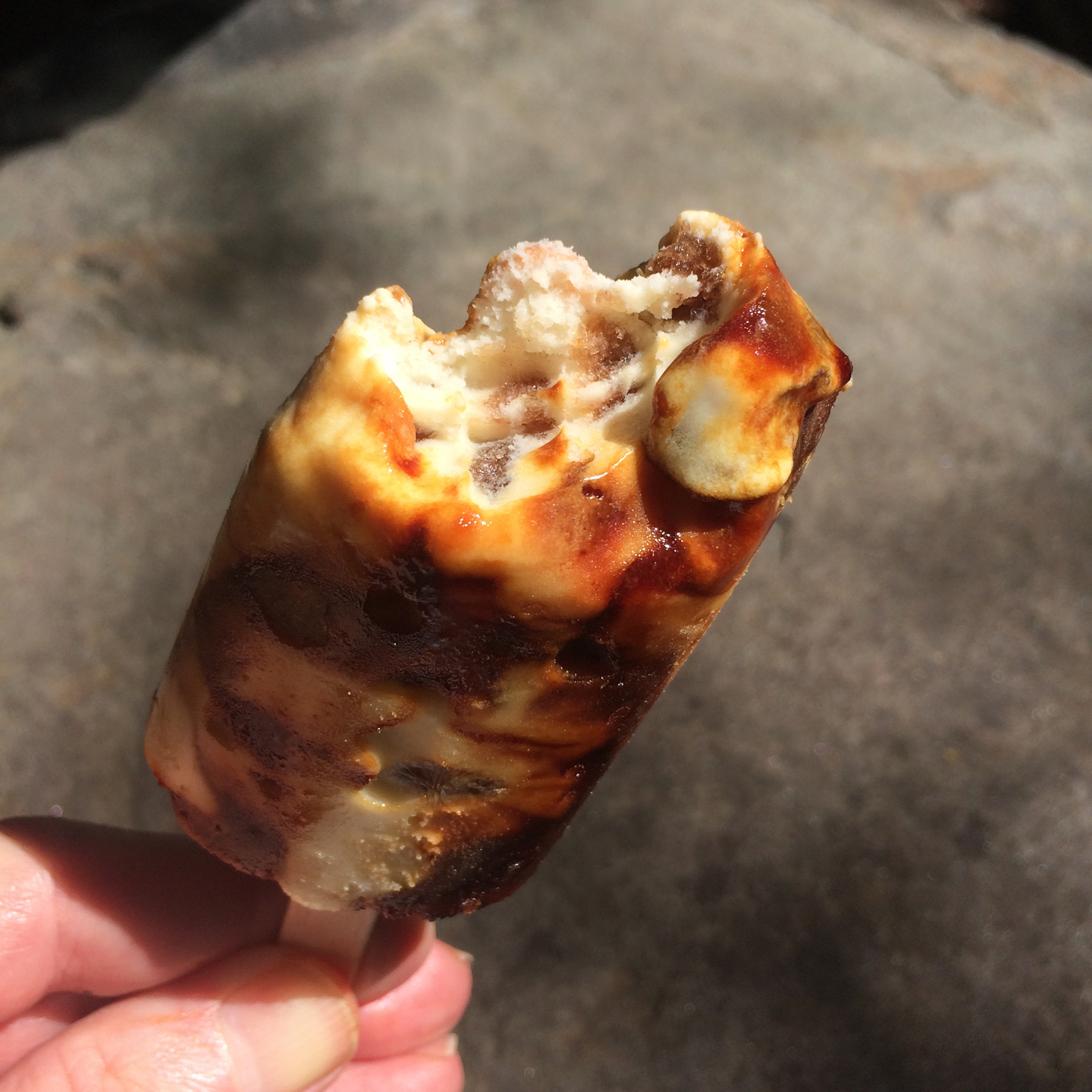
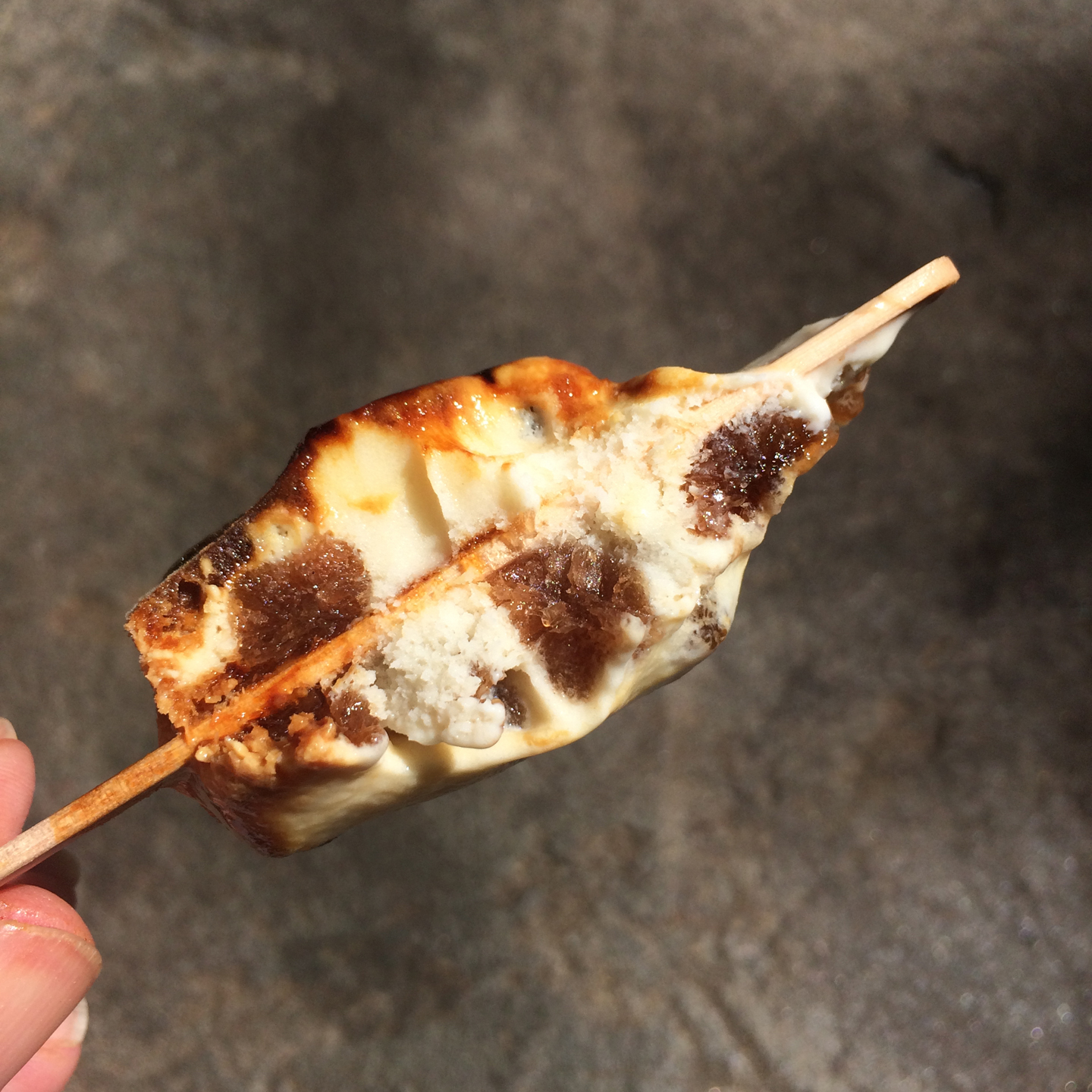
And a reminder: New York City boasts at least six Chinatowns and perhaps a few more depending upon your definition of what constitutes a Chinatown; just pick one and go! Now, more than ever, please SUPPORT CHINATOWN!
Part of what I’m calling the “Golden Oldies” series: photos I had posted on Instagram in bygone days that surely belong here as well, from restaurants that are still doing business, still relevant, and still worth a trip.
From a visit in April 2017 to their Flushing venue at 135-33 40th Road.
(Click on any image to view it in high resolution.)
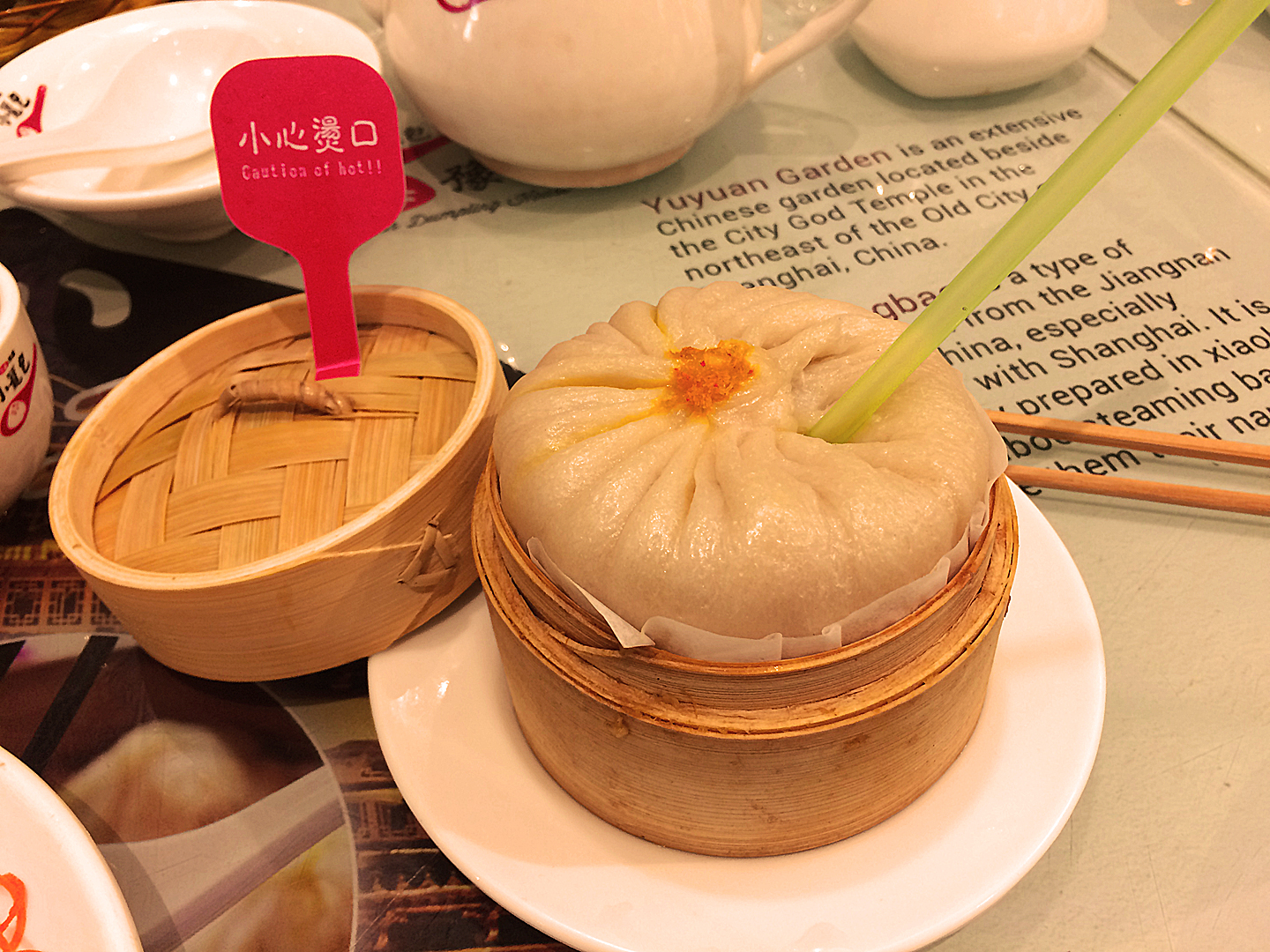
Soup Filled Bun. Yes, that’s a standard size drinking straw. Shanghai You Garden is famous for this Brobdingnagian novelty, but in addition to being a show stopper, this pillowy pouch is a taste topper too.
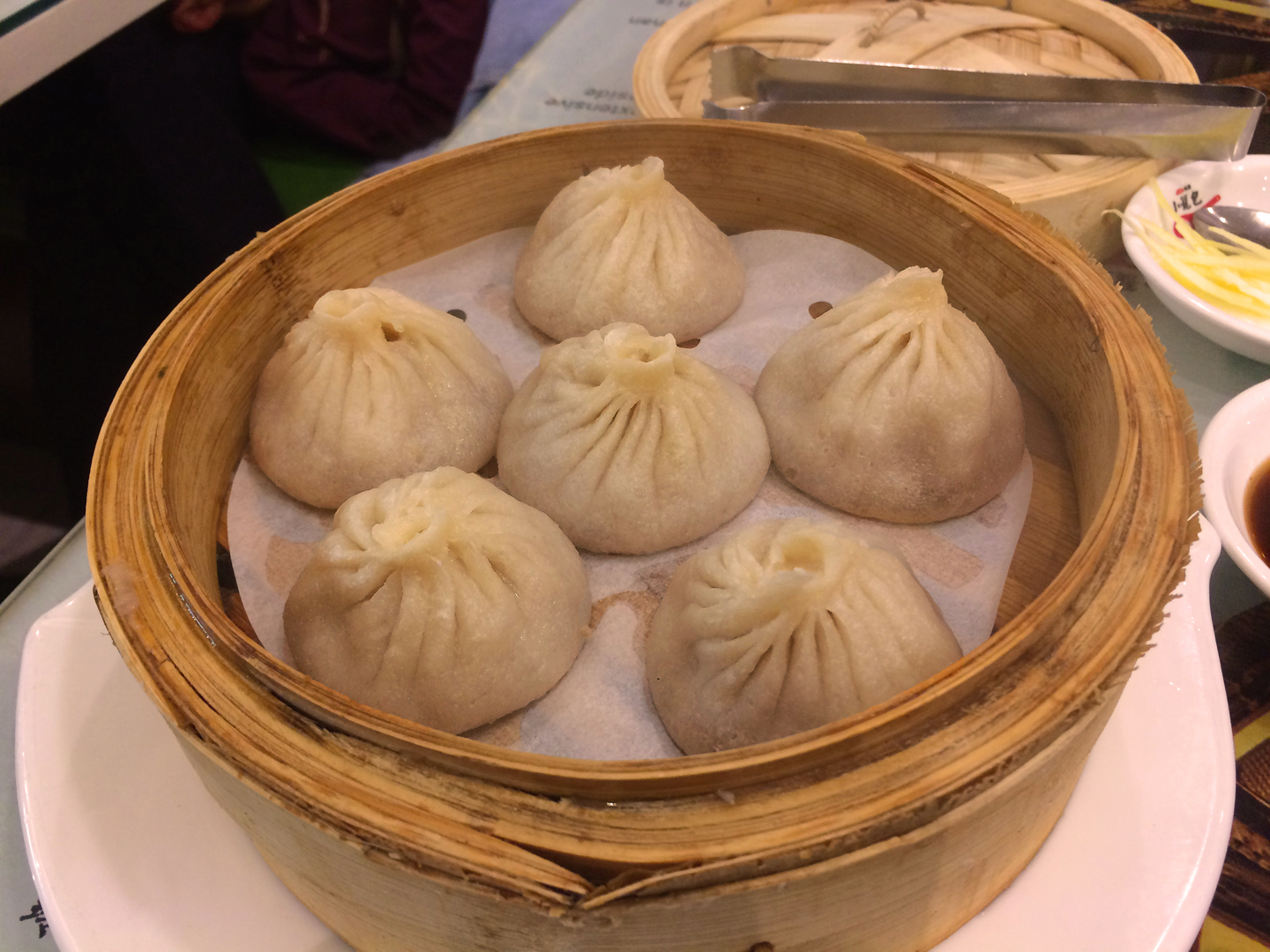
Steamed Crab Meat Xiao Long Bao; these more modestly sized soup dumplings were tasty as well.
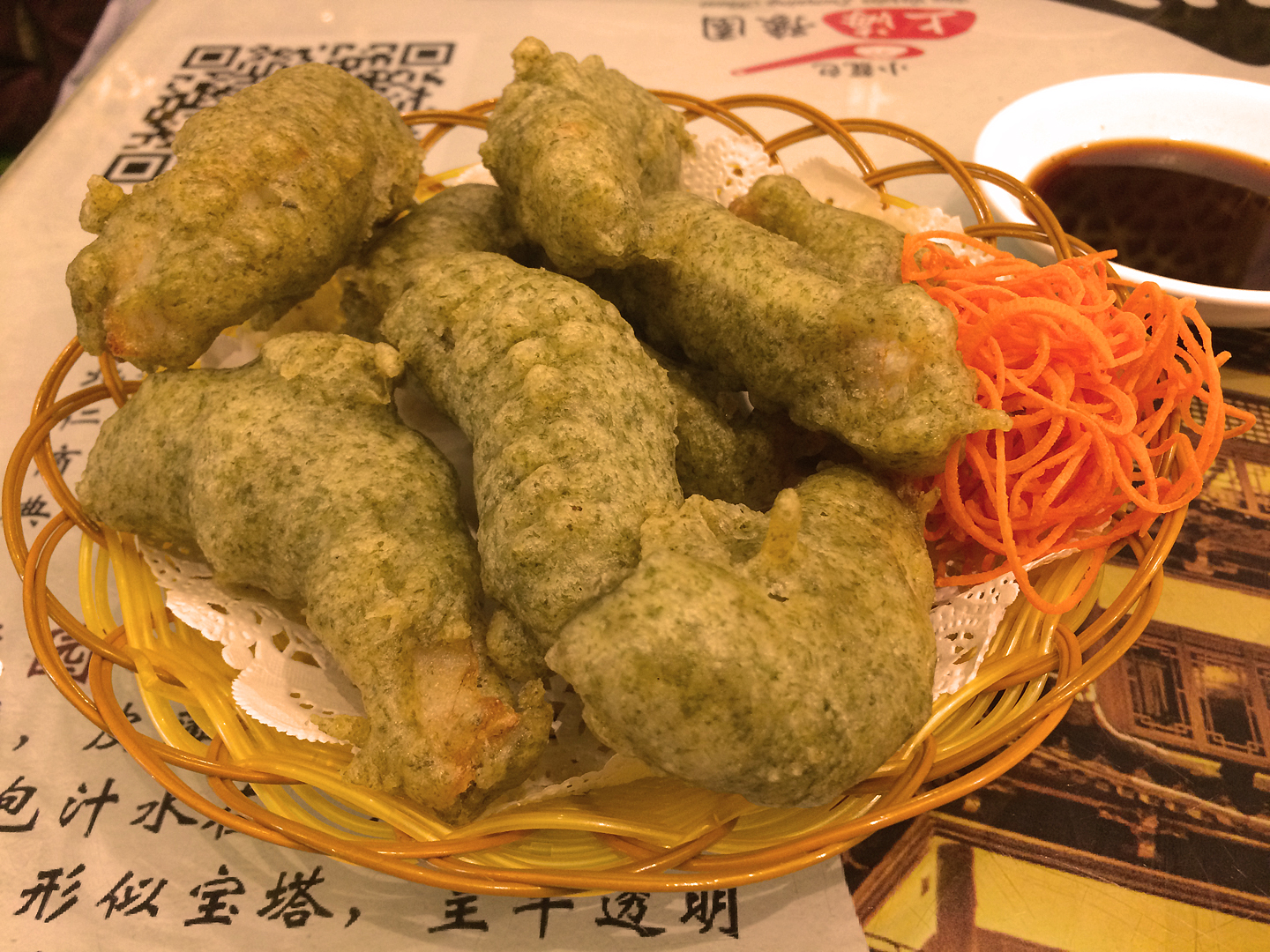
Deep Fried Yellow Croaker with Dried Seaweed. If you’re a fan of fried fish like me, this will satisfy your cravings.
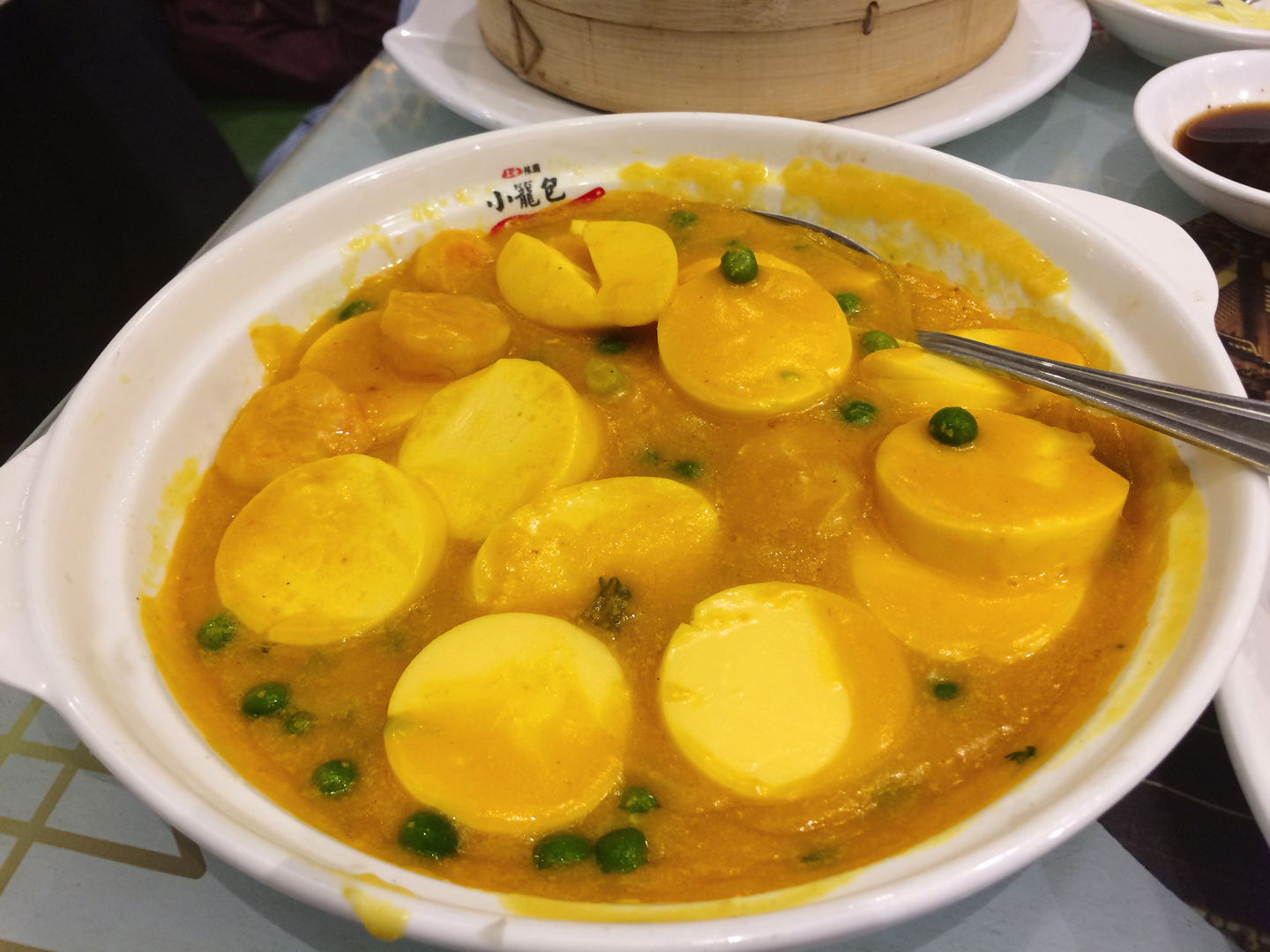
Sautéed Tofu with Salted Preserved Egg Yolk and Shrimp. Instagram is fairly dripping with egg yolk porn, so its popularity seems to be universal. If you’re in that camp and you’ve never tasted salted preserved duck egg yolk in some form, you’re missing out on an intensely rich and flavorful experience that almost makes chicken egg yolks pale into insignificance. Once you go quack, you’ll never go back.
If you haven’t sampled Shanghainese food, Shanghai You Garden is the perfect place to get your feet wet; everything we ordered that day was a treat.
And a reminder: New York City boasts at least six Chinatowns and perhaps a few more depending upon your definition of what constitutes a Chinatown; just pick one and go! Now, more than ever, please SUPPORT CHINATOWN!
Shanghai You Garden has two locations: 135-33 40th Road in Flushing and 41-07 Bell Blvd in Bayside.
👨🍳 Cooking in the Time of COVID 👨🍳
(Click on any image to view it in high resolution.)
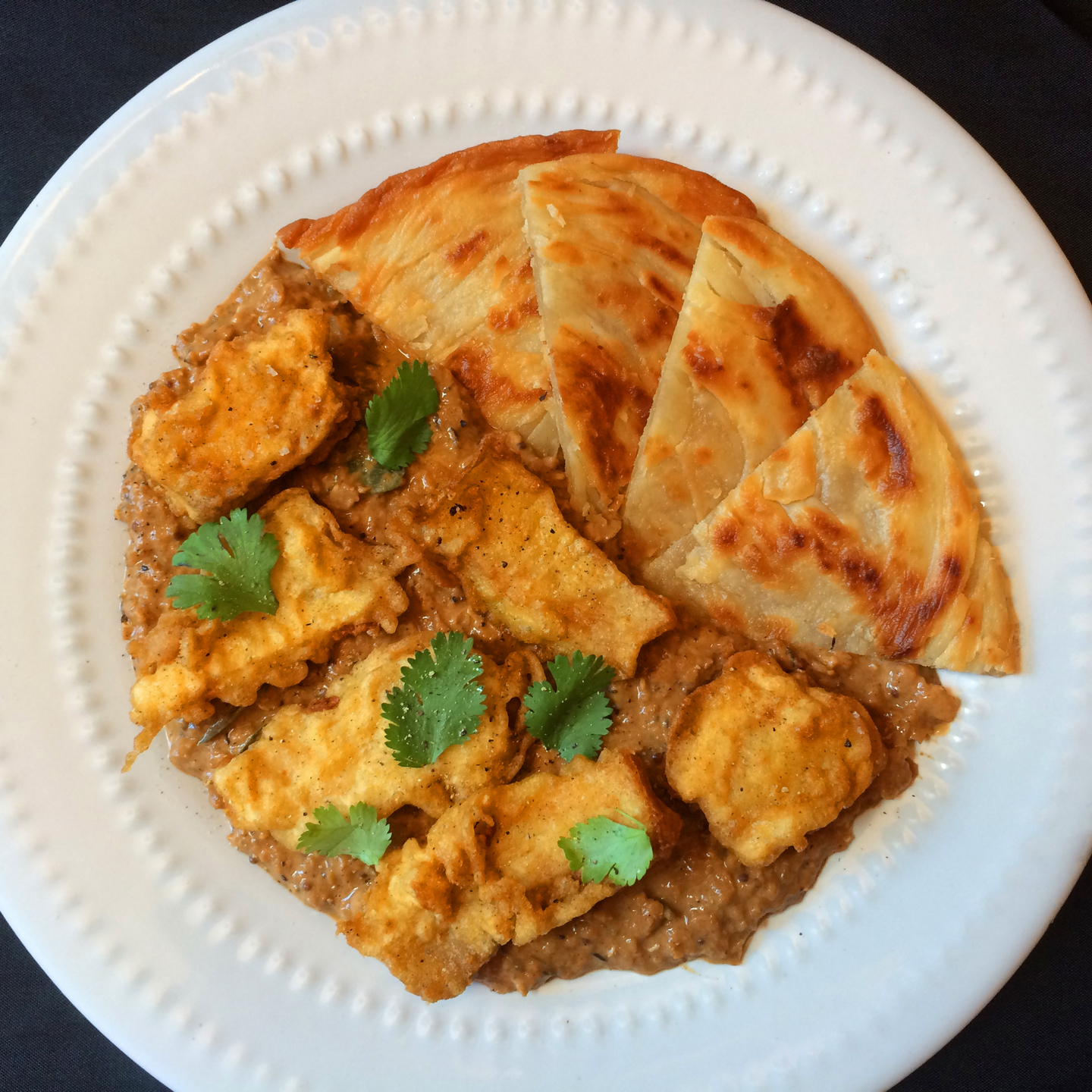
Another one of those improvised, sort-of-ethnic (in this case Indian), rainy day, I-don’t-feel-like-writing-so-I’ll-spend-the-day-cooking time sinks.
Sometimes folks inquire about what goes into these concoctions; I seldom measure anything except when I’m developing a recipe or baking but I did try to write down all the ingredients this time for anyone who might be curious.
Oversimplified and if memory serves, here’s how the masoor dal (red lentils) started out: I sautéed puréed onion, ginger, green chili and garlic in coconut oil and set that aside.
The next step involved toasting mustard seed, cumin seed, ground cumin, coriander, ground dried chilies, cinnamon, cardamom, garam masala, amchur (ground dried green mango) and turmeric. I tempered them in ghee – that’s a tadka – and when my kitchen smelled like an Indian restaurant, I combined it with the aromatics, cooked it a bit, added the dal, and stirred in chicken broth and tomato paste. They simmered together until the dal was tender; at that point I introduced a little yogurt to the mixture and it was ready.
Or something like that.
The fish component consisted of floured (that had been kicked up with some of those spices) pieces of basa, pan fried, and placed over a bed of the dal. Homemade parathas on the side.
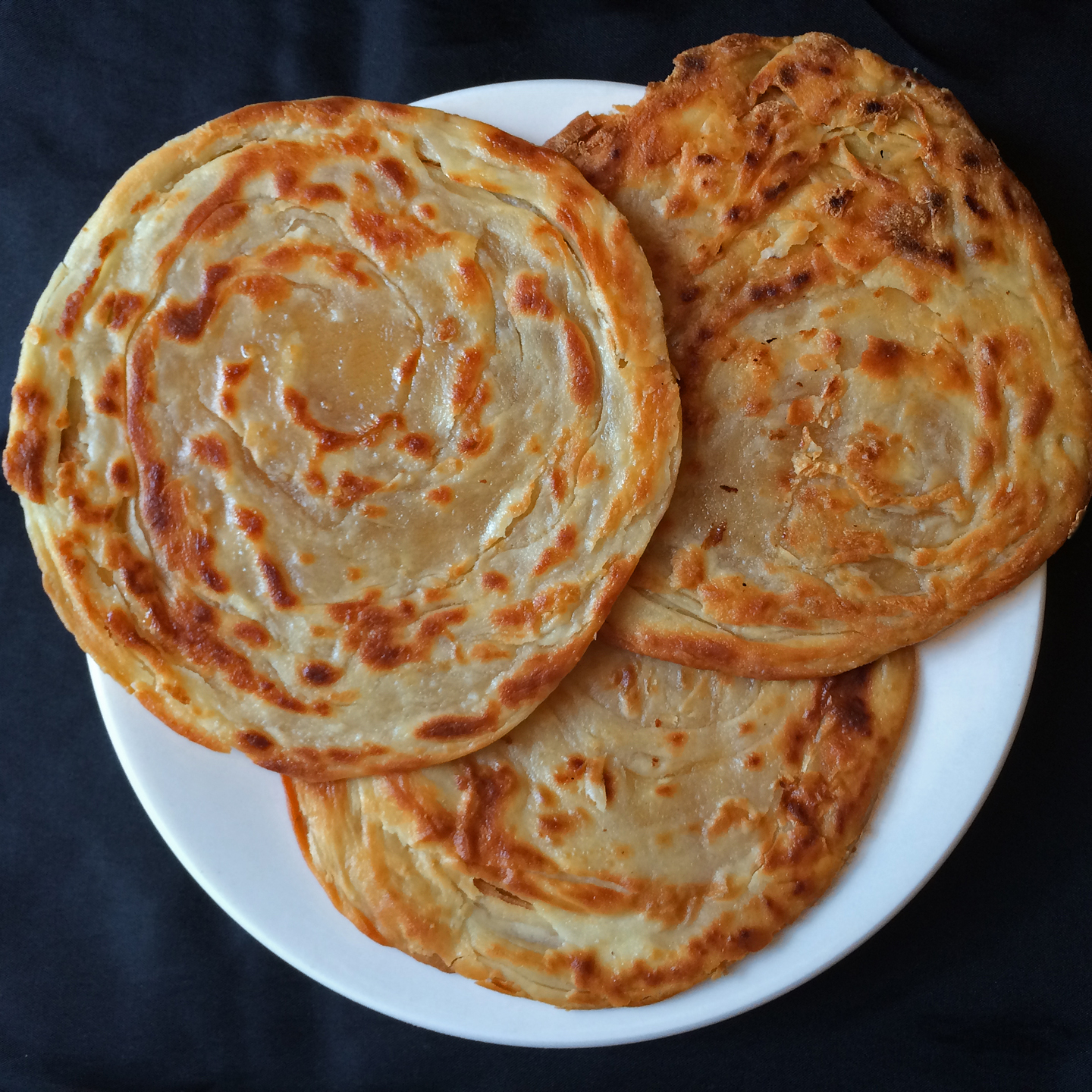
Spotlight on the aforementioned parathas.
Of course, the problem with a day that I spend cooking because I don’t feel like writing is that I ultimately have to write about the day that I spent cooking.
Hoist by my own petard. 😑
Stay safe, be well, and eat whatever it takes. ❤️
Part of what I’m calling the “Golden Oldies” series: photos I had posted on Instagram in bygone days that surely belong here as well, from restaurants that are still doing business, still relevant, and still worth a trip.
While in Ridgewood or while in Bushwick, consider a stop at While in Kathmandu, the Nepali restaurant virtually on the border of those two neighborhoods. When we visited in September 2017, they were the new kid on the block, but they’re still holding down the fort at 758 Seneca Ave, Queens and their menu has expanded significantly since the early days. Here’s what we ordered back then:
(Click on any image to view it in high resolution.)
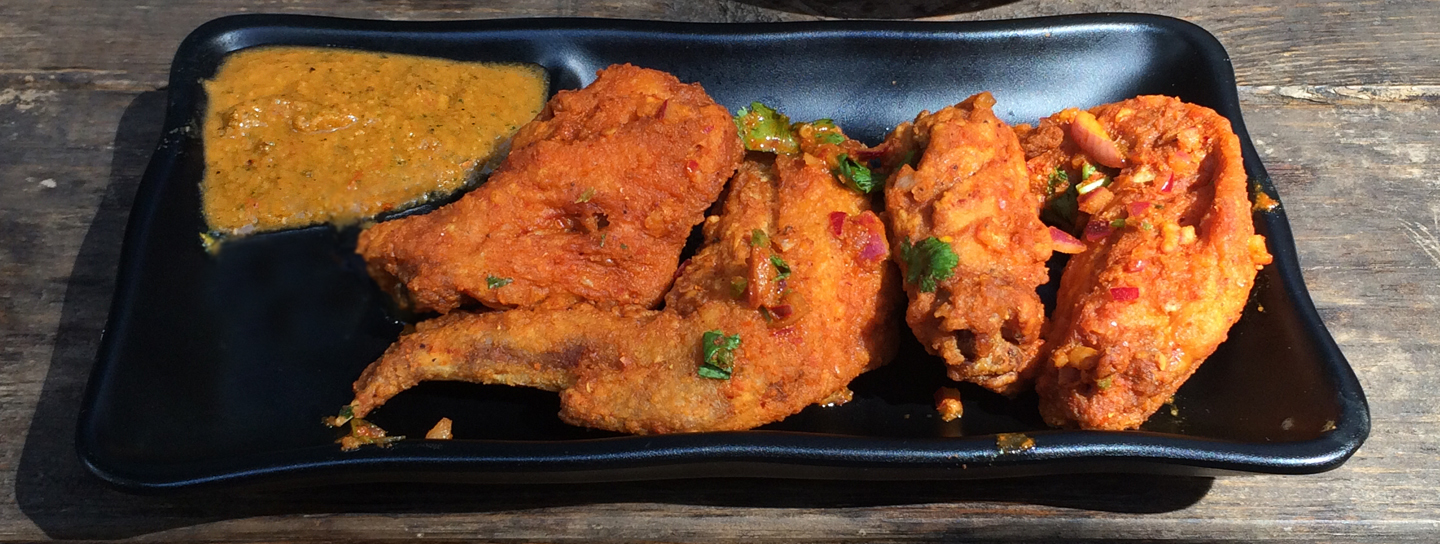
Masala Wings, crispy fried chicken wings tossed in a homemade spice blend.
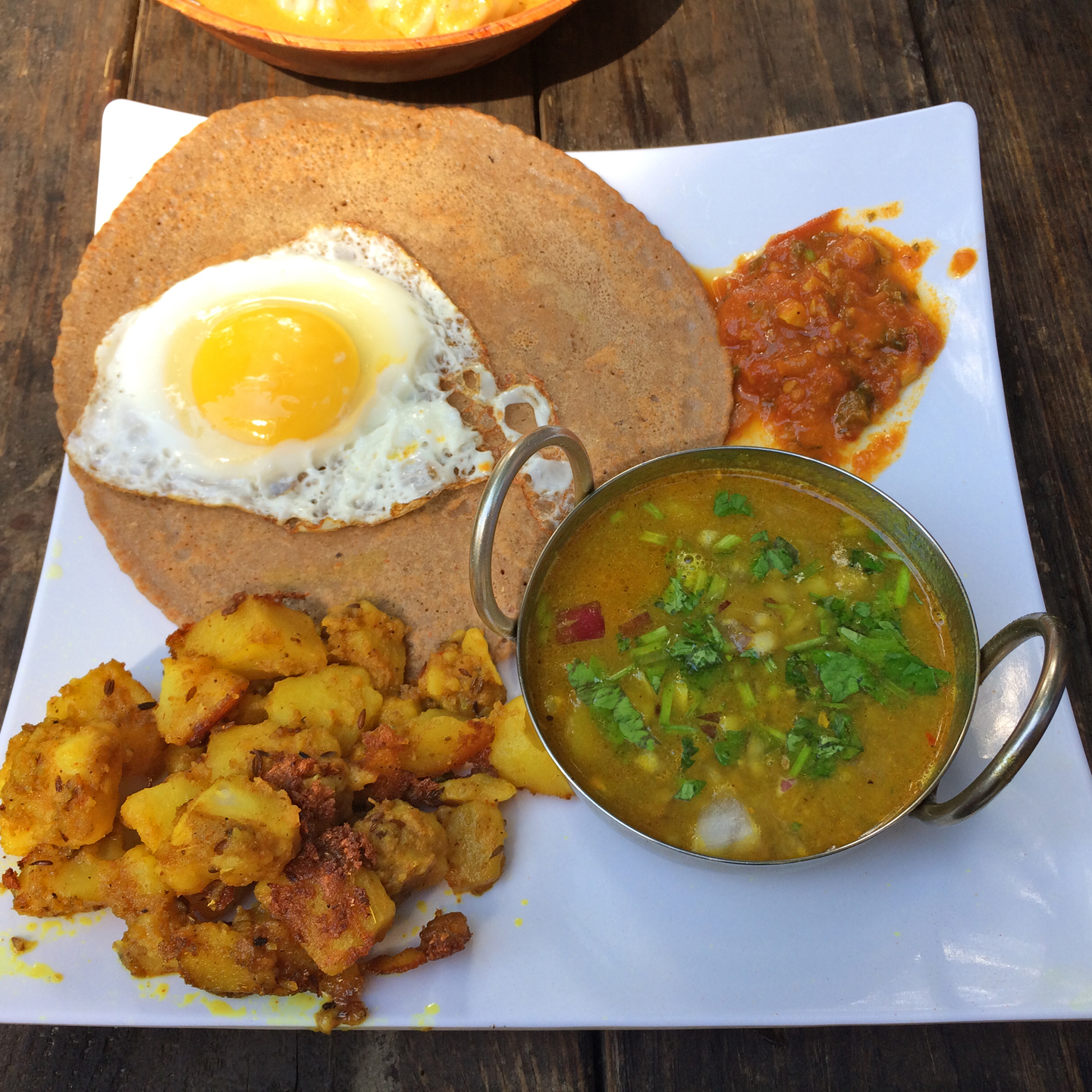
Breakfast! Fapar Ko Roti, a savory traditional buckwheat pancake, served with potato curry, soup, and a fried egg.
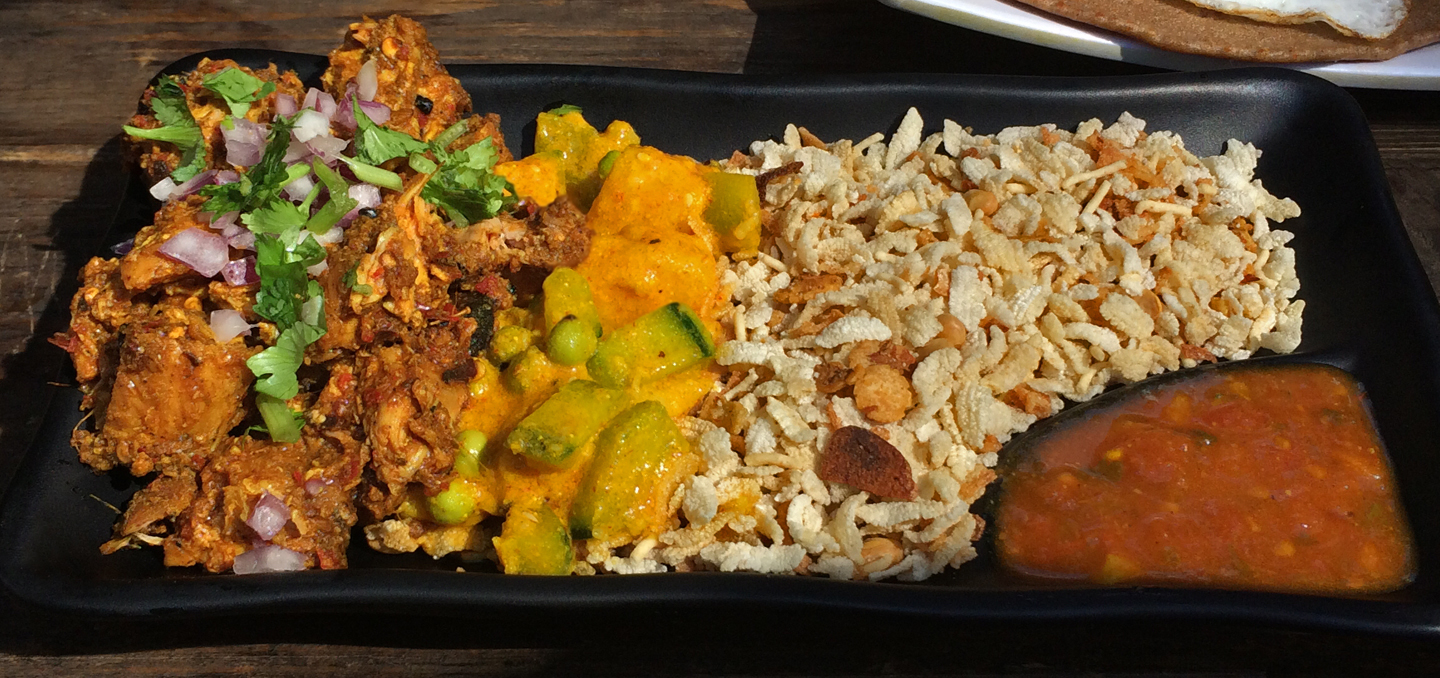
Chicken Choila, grilled chicken marinated in a blend of spices and served with chiura (beaten, flattened puffed rice) and aachar.
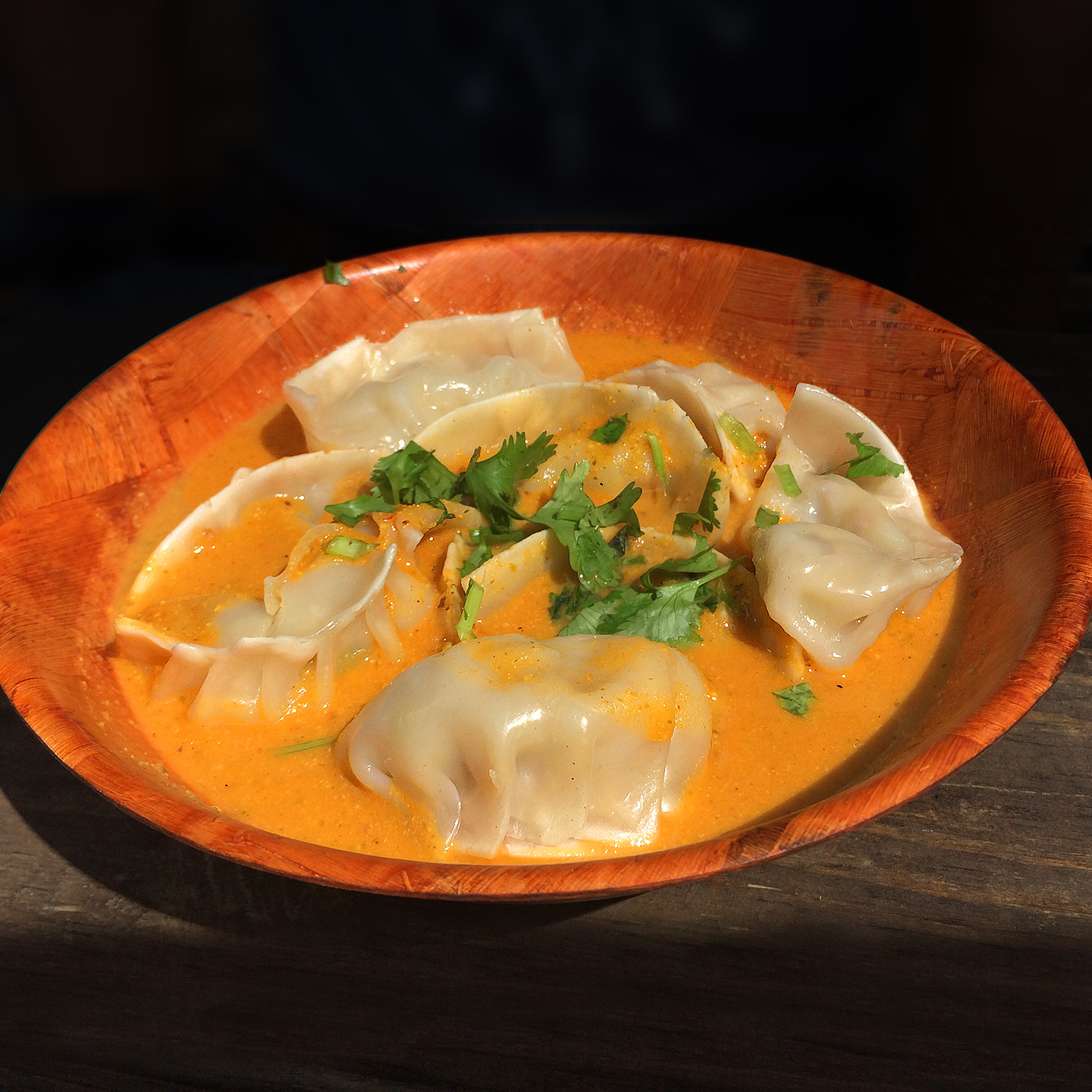
And, of course, no Nepali meal is complete without Jhol Momo. Jhol means soup; I was told that mo means steam (then momo would suggest steam-steam so let’s just make the culinary quantum leap to dumpling and not look back: I’ve definitely heard more plausible explanations), hence soup dumpling. But despite what you might be thinking, there is no soup to be found inside these dumplings: rather the hot dumplings swim in a cold tomato-y pool that lies somewhere along the sauce <-> soup continuum and the two complement each other deliciously. They’re available in five of your favorite momo flavors: chicken (shown here), pork, shrimp, plantain (kera ko momo), and vegetable, each with its own characteristic shape. I understand that you can get them fried as well, so I guess that would be fried-steam-steam; I’m not going to go there linguistically, but I’m definitely going to go there for another delicious meal!
While in Kathmandu is located at 758 Seneca Ave, Queens.
It seems like every world cuisine has its own version of fried dough – Zeppole are Italy’s contender. You’ve probably seen them at street festivals or perhaps you were fortunate enough to have grown up watching your nonna make them as she confidentially disclosed her signature special ingredient, amore, which of course elevated hers above all others. They’re usually dusted with a sprinkle of powdered sugar but on occasion are dressed with a shot of pastry cream.
(Click on any image to view it in high resolution.)
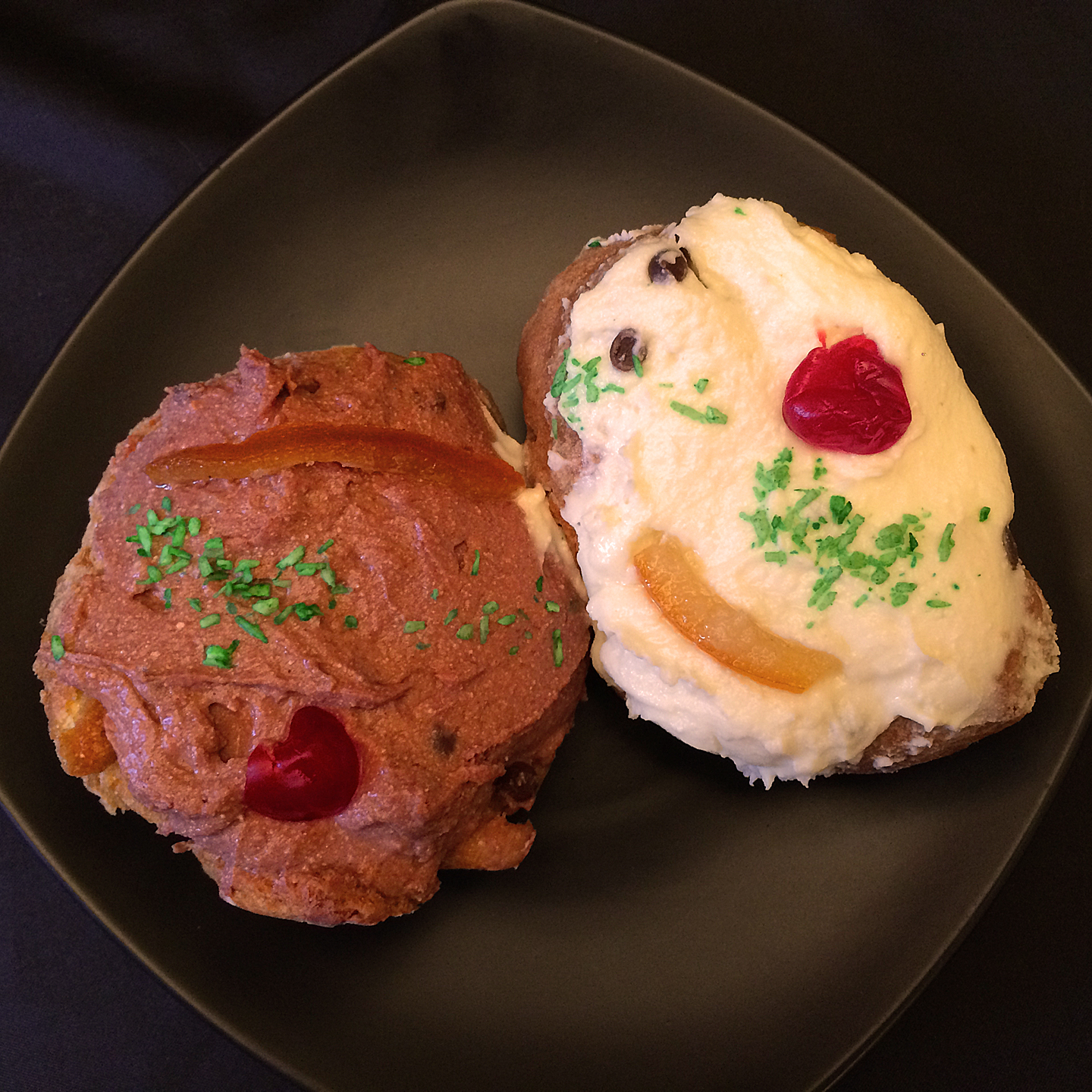
These first cousins are sfingi (pronounced SFEEN-ji), Sicily’s answer to Neapolitan zeppole, although the two are not mutually exclusive. Sfingi are fried cream puffs filled with cannoli cream and can be found in Italian-American bakeries in celebration of Saint Joseph’s Day, March 19, honoring the husband of the Virgin Mary. (BTW, I’ve seen recipes that call for baking them, but….No.) This pair, chocolate on the left, bursting with ricotta-based, cinnamon-inflected, sweet cannoli cream shot through with mini chocolate bits, came from Court Pastry Shop, 298 Court St in Brooklyn.
I checked into Wikipedia before I started writing this to see what gaps in my knowledge of Irish cuisine might exist: the extensive article boasted almost 9,000 words and explored the cuisine beginning with its roots in the prehistoric Mesolithic Period (8000–4000 BC)! So for the sake of our mutual sanity, we’re going to stick with Irish food that I actually know and love.
(Click on any image to view it in high resolution.)
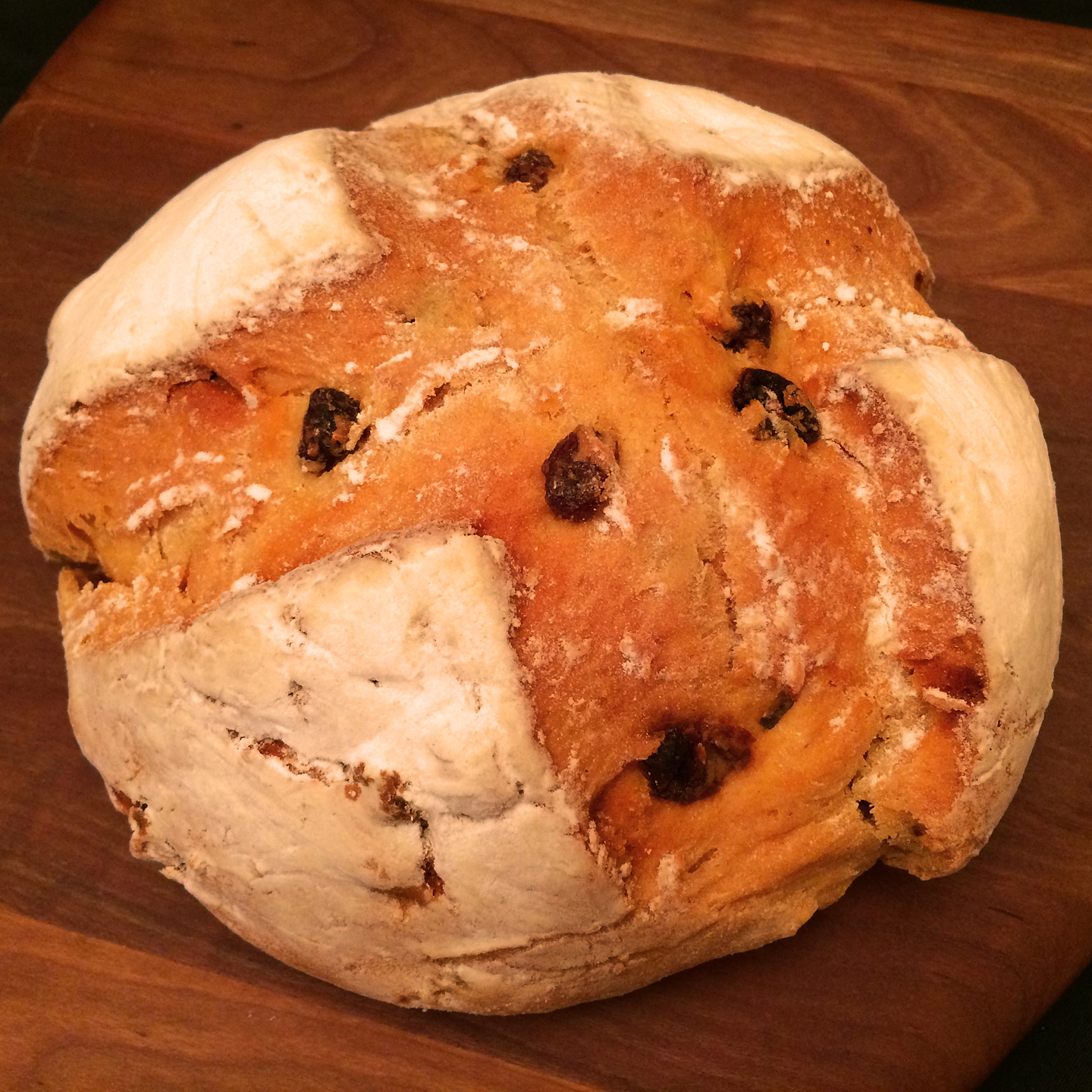
Some dishes are quintessentially Irish like colcannon (potatoes and cabbage), bacon and cabbage (which begat corned beef and cabbage), Irish stew (traditionally mutton and potatoes), boxty (a potato pancake), coddle (sausage, bacon, and potatoes), black pudding and white pudding (sausages), shepherd’s pie, and more.
But in honor of St. Patrick’s Day on March 17, here is a favorite that does not include meat, potatoes or cabbage: Irish soda bread. Baking soda activated by buttermilk takes the place of yeast as a leavening agent in this delicacy; that accounts for its delicate, crumbly texture and puts it somewhere along the bread <-> cake continuum.

This sweet raisin-studded beauty came from Court Pastry Shop, 298 Court St in Brooklyn, and it was truly outstanding. It’s served here with Irish cheddar cheese, radicchio marmalade (a change up from the traditional coarse cut orange) and whipped butter.
(I know. Two rave reviews in less than a week. What’s gotten into me? But if you can get to Court Pastry, try it for yourself and let me know what you think.)